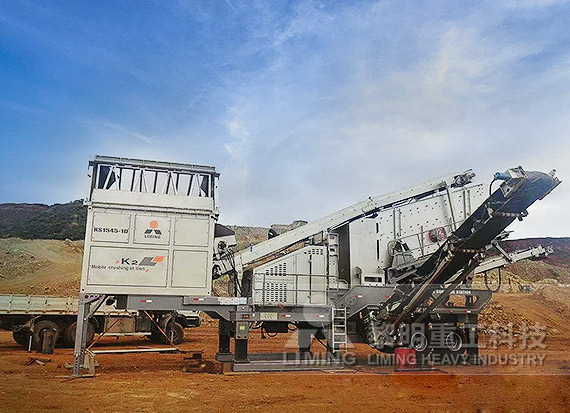

The properties of the raw materials entering the screen have the following effects on the screening efficiency of the vibrating screenClick here to learn about vibrating screens1. Moisture content
The properties of the raw materials entering the screen have the following effects on the screening efficiency of the vibrating screen
Click here to learn about vibrating screens
1. Moisture content
Experiments have shown that sometimes adding surfactants to water-containing materials can improve the activity and dispersion of the materials and improve the screening conditions. The screen surface made of materials that cannot be wetted by water can also improve the working efficiency of the screen.

2. Mud content
The mud is easy to clump and block the screen holes during the screening process. Clay materials and sticky materials can only be screened with a screen surface with larger screen holes in certain special cases. When screening beads of ore, special measures must be taken, namely wet screening. Wet screening is like spraying water on the material moving along the screen surface, desludging before screening, drying the screening raw materials, and using an electric heating screen surface to screen the ore that is sticky and has a good effect.
3. Particle size characteristics
The particle size characteristics that affect the screening process mainly refer to the content of various particle size materials in the raw materials that have specific significance for the screening process. When the raw material contains more difficult-to-screen particles and obstructing particles than other particle sizes, it is beneficial to the screening process. The particle size characteristics that affect the screening process also include the shape of the particles. For particles with relatively close three-dimensional dimensions, such as spheres and polyhedrons, screening is relatively easy; while for particles with large differences in size, such as flakes, strips and strange bodies, screening is more difficult under the same other conditions.
4. Density characteristics
When all particles in the material have the same density, it generally has no effect on screening. However, when there is a density difference between coarse and fine particles in the material, the situation is quite different. If the density of coarse particles is small and the density of fine particles is large, it is easy to screen. On the contrary, if the density of coarse particles is large and the density of fine particles is small, such as coal containing more coarse-grade gangue, screening is relatively difficult.
Previous: SMP Crusher
Next: SMP Crusher

The properties of the raw materials entering the screen have the following effects on the screening efficiency of the vibrating screenClick here to learn about vibrating screens1. Moisture content
The properties of the raw materials entering the screen have the following effects on the screening efficiency of the vibrating screen
Click here to learn about vibrating screens
1. Moisture content
Experiments have shown that sometimes adding surfactants to water-containing materials can improve the activity and dispersion of the materials and improve the screening conditions. The screen surface made of materials that cannot be wetted by water can also improve the working efficiency of the screen.

2. Mud content
The mud is easy to clump and block the screen holes during the screening process. Clay materials and sticky materials can only be screened with a screen surface with larger screen holes in certain special cases. When screening beads of ore, special measures must be taken, namely wet screening. Wet screening is like spraying water on the material moving along the screen surface, desludging before screening, drying the screening raw materials, and using an electric heating screen surface to screen the ore that is sticky and has a good effect.
3. Particle size characteristics
The particle size characteristics that affect the screening process mainly refer to the content of various particle size materials in the raw materials that have specific significance for the screening process. When the raw material contains more difficult-to-screen particles and obstructing particles than other particle sizes, it is beneficial to the screening process. The particle size characteristics that affect the screening process also include the shape of the particles. For particles with relatively close three-dimensional dimensions, such as spheres and polyhedrons, screening is relatively easy; while for particles with large differences in size, such as flakes, strips and strange bodies, screening is more difficult under the same other conditions.
4. Density characteristics
When all particles in the material have the same density, it generally has no effect on screening. However, when there is a density difference between coarse and fine particles in the material, the situation is quite different. If the density of coarse particles is small and the density of fine particles is large, it is easy to screen. On the contrary, if the density of coarse particles is large and the density of fine particles is small, such as coal containing more coarse-grade gangue, screening is relatively difficult.
Previous: SMP Crusher
Next: SMP Crusher